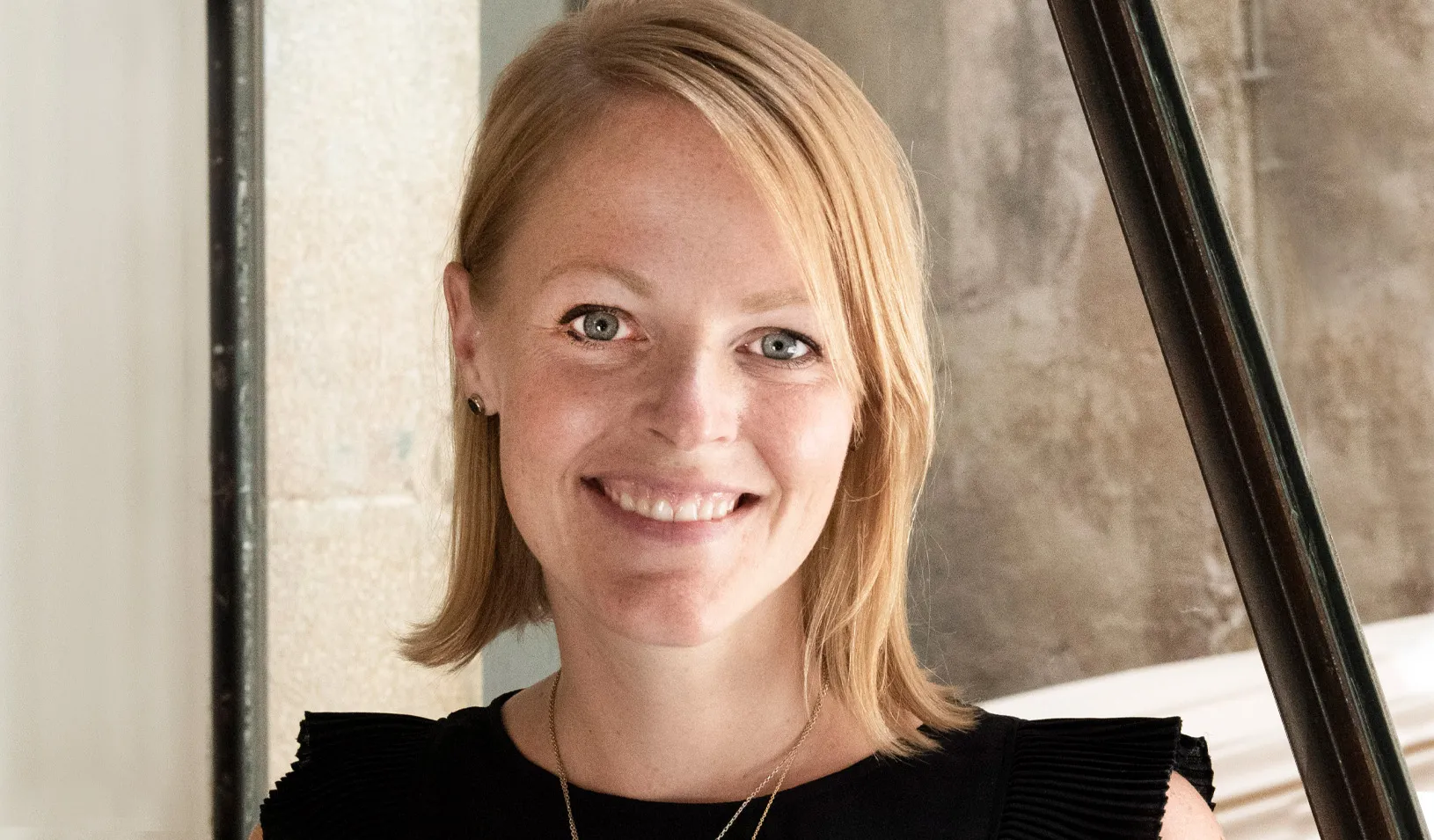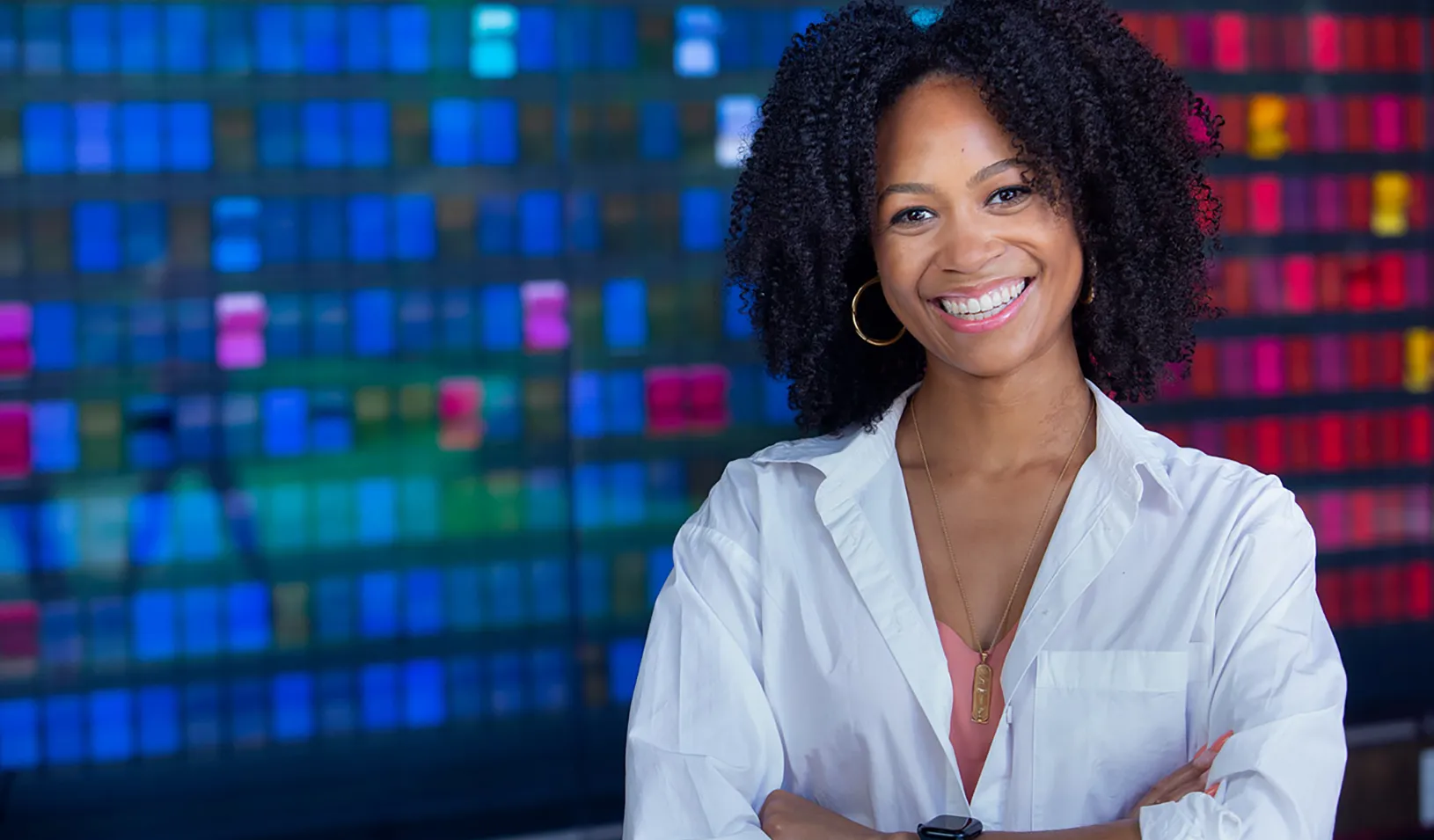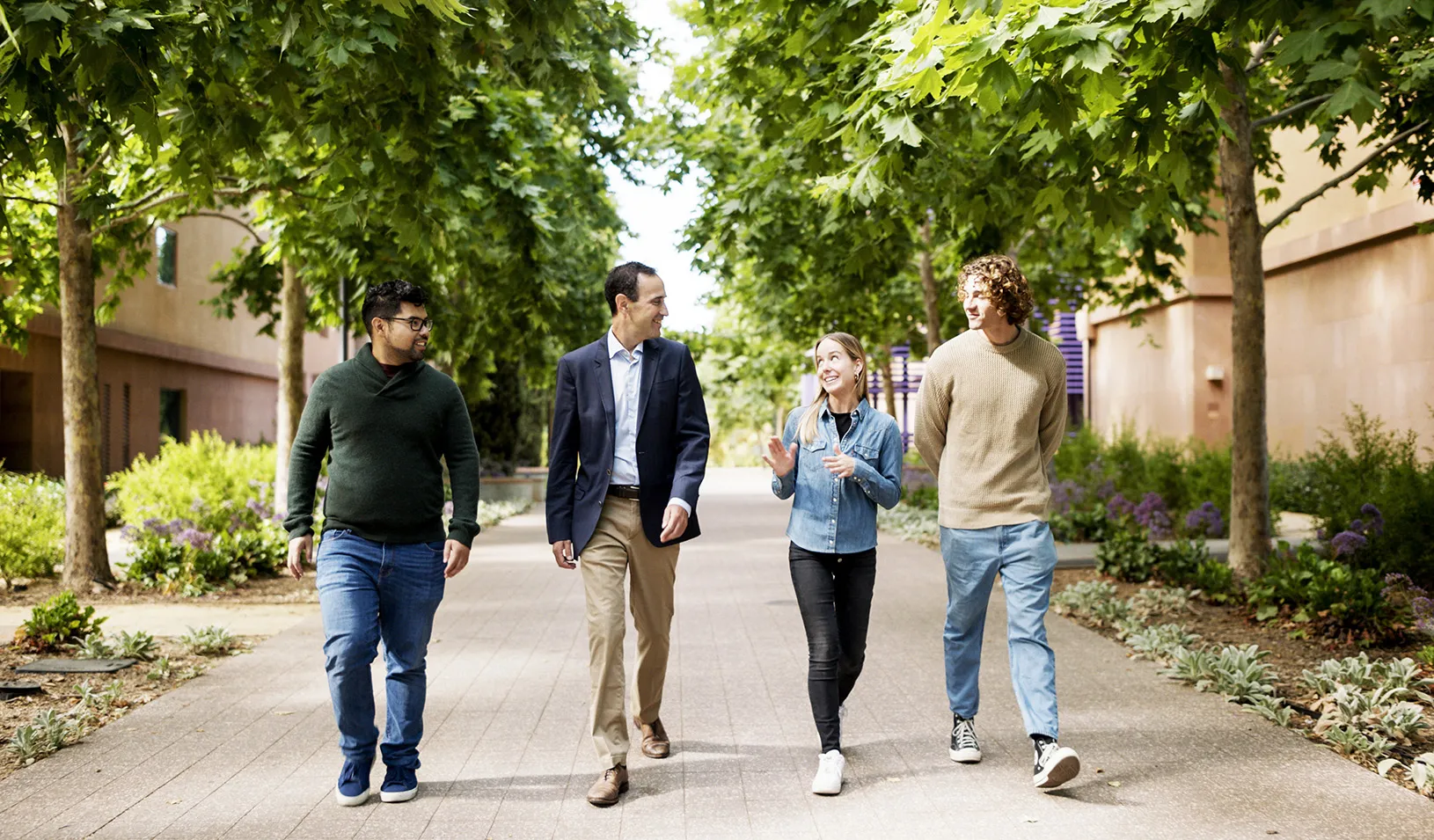Stanford GSB’s Allison Rouse Named Director of Diverse Alumni Communities
“We have to make sure people see that they belong,“ says Rouse. “That’s ultimately what this work is intended to do.”
December 07, 2020
Long-time Stanford GSB admissions officer, Allison Rouse, joins the alumni relations team.| Photo-Illustration Hello Von
Allison Rouse’s interest in inclusion dates back to his teenage years in the Bronx, where he grew up within walking distance of Yankee Stadium. He attended a private school on a scholarship and was one of only a handful of African-American students. To create a community for himself and other students of color, Rouse and a few fellow classmates created a multicultural student group.
Close to 35 years later, Rouse’s commitment to inclusion took a new turn when he was named Stanford GSB’s Director of Diverse Alumni Communities. In this newly created role, Rouse will develop strategies, shape programs, and manage initiatives to support equity, inclusion, and belonging for GSB alumni.
“Allison has initiated and supported diversity efforts at the GSB throughout his career in MBA Admissions and with the MSx Program,” says Derrick Bolton, associate dean for external relations. “We’re thrilled to have him take on this role to strengthen our alumni community.”
Rouse first came to Stanford GSB in 1996 to work in MBA Admissions. After his time in MBA Admissions, he took on a variety of roles from an edtech startup to education reform. His work included travel within the United States and work with educators and nonprofit organizations in India and South Africa. While in South Africa, Rouse continued to work with the MBA Admissions Office as an early ambassador, holding information sessions and working with embassies to increase awareness of Stanford GSB.
He returned to Stanford in 2015 to help grow the business school’s MSx Program. He’s informally known as the mayor of Stanford GSB for his willingness to build bridges across the school through the creation of cross-school programs like Accelerate, a professional development program for women, and the creation of the Diversity, Equity, and Inclusion Staff Work Group.
Your interest in education and diversity work was piqued as an undergrad. Tell us about that.
At the University of Pennsylvania, I was a work-study student in admissions and helped the person in charge of recruiting multicultural students. Before graduation, an admissions officer job opened up. I applied and got it. It was my first job in higher education. I was in charge of recruiting and evaluating applications from eight Midwestern states, Arizona, and Westchester and Rockland counties in New York. It was my first time traveling in the Midwest, and I learned quite a bit about the diversity of our country.
As someone born and raised in New York City public housing, I had always regarded poverty as an urban problem. But when I got to the middle of the country, I realized that poverty takes on multiple faces. I traveled through rural Missouri and saw poverty I had never seen before. In the Bronx we had clean, running water with fluoride. But some of these Midwest communities did not. A lot of the high school kids I met with just needed someone to talk to, and through that work, I found a passion for breaking through the barriers that sometimes separate us and helping people on their individual journeys.
You’ve had some experiences that have shaped your views on diversity, inclusion, and belonging in the context of education and equity in education. Can you tell us about those?
I’ve been lucky to have been exposed to a variety of people, languages, and cultures that have shaped my views. In high school, my Jewish friends included me in their family celebrations. While studying abroad in Belgium and Spain, I learned the critical importance of understanding the impact of culture on identity in building connections across differences. And while working for Room to Read — a nonprofit focused on girls’ education and children’s literacy in Asia and Africa — I had a chance to work with brilliant South Africans and Zambians who helped me to better understand the negative impact of colonization and the redeeming power of education, especially when sharing your own stories in your mother tongue.
You’ve had an eclectic mix of jobs, from working at Stanford first in the 1990s to joining an edtech company. What were those roles like?
Through happenstance while working at Penn, I applied to be an admissions officer at Stanford GSB. I was 25. Shockingly, Marie Mookini, then the director of MBA Admissions, hired me. I left Stanford three years later to join an edtech startup, and then went back to Penn for a year. I got to take things I learned at the startup and apply them to college admissions. I was using tech in a way many people in higher education weren’t at the time.
For example, I set up an AOL IM account to chat with prospective students. I also used internet-based travel companies to dramatically increase the number of students we could fly in to visit Penn and decrease overall fly-in costs.
I was successful in those roles, but also experienced many setbacks along the way. My professional and personal successes and failures have shaped who I am today.
You returned to Stanford six years ago to become associate director of the MSx Program. Why did you decide to give that up and take on this new diversity role?
Allison Rouse and his family. | Allison Rouse
I love the Stanford MSx Program, formerly known as the Sloan Program, and have enjoyed working with the accomplished leaders enrolled. I will miss working directly with MSx students, but I do look forward to working with them as they join the GSB alumni community. In addition to my work with the MSx Program, I’ve been able to informally work on diversity, inclusion, and belonging at the GSB.
For example, several GSB colleagues and I created a Diversity, Equity, and Inclusion Staff Work Group in 2015. We saw an opportunity to come together to think strategically about creating an environment that acknowledges and celebrates people from different backgrounds and contributes to their sense of belonging. Together, we created an inventory of diversity and inclusion programs, a diversity dashboard, and proposed the creation of a DEI office.
This new role is an opportunity to use my experience with Stanford GSB students and the work I’ve done with equity and inclusion and apply it to engaging our alumni. The GSB community has a chance to contribute in a meaningful way to broad efforts that address anti-Black racism and discrimination in other forms, and ensure equality of opportunity for women. The Stanford GSB tent is actually very large; we have room for everyone. However, we have to make sure people understand that and see that they belong. That’s ultimately what this work is intended to do.
Where do you start?
I’ll start by working with alumni leaders that volunteer their time with various identity groups: the Black Alumni Chapter, the Latino/a Alumni Chapter, the Asian Alumni Chapter, GSB Pride, Women’s Circles, and the Stanford Women on Boards Initiative. MBA students created the Native Student Business Association. It’s small, and it’s one we want to grow and support into alumnihood. I also see this role playing a part in supporting the many anti-Black racism and allyship initiatives created by our alumni in response to the killings of George Floyd, Breonna Taylor, and others.
I’ll start there, but our intent is that all alumni should feel welcome to contribute, and confident they will be heard. A commitment to diversity means engaging with and respecting the views and opinions of all our alumni. I’ll strive to create an atmosphere where everyone has room to belong and contribute.
It’s been a tough last nine months. How have you been spending your time during the pandemic?
I’ve spent most of the last nine months focused on my family. My wife, who went to Stanford for undergrad, is a medical doctor who’s recently been working on diagnostics for COVID-19. Given the importance of her work, my job is to make sure she can do this critical work. That means I’ve been primarily responsible for my son’s virtual education and meal preparation. We’ve found ways to have fun, too. We play soccer a few times a week at Stanford masked up and take advantage of hiking or biking different Bay Area trails.
I share this because it’s really important to me that people take care of themselves and their families first and foremost. My wife and I are lucky to have great jobs and a roof over our heads. We are privileged. The reason we got here is because of our education, and we believe in paying it forward. That’s what drives us every day. If we can make someone else’s life just marginally better — then it’s all worth it.
— Deborah Lynn Blumberg
For media inquiries, visit the Newsroom.
Explore More
Erin Nixon Joins Stanford GSB as Assistant Dean of Admissions

Nia Rose Froome, MBA ’23: Making Local, Fresh Food Available for All

New Research Fund Promotes Responsible Leadership for the Next Century
